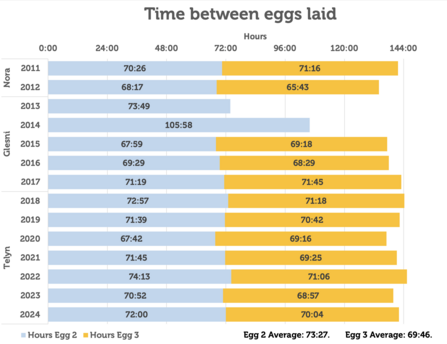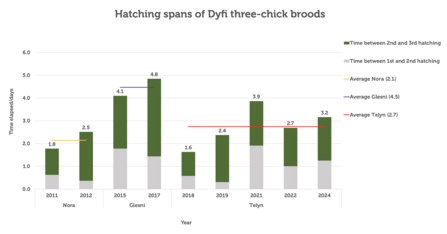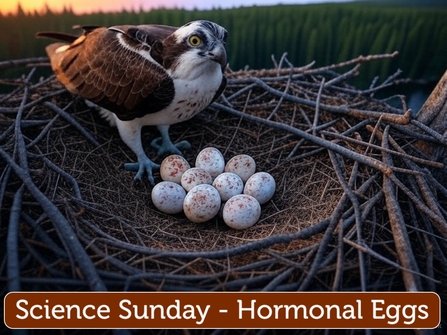Here are the 2025 egg laying times - almost exactly three days apart:
🥚 13:48 - 9th April (earliest ever at this nest)
🥚🥚 13:37 - 12th April
🥚🥚🥚 13:52 - 15th April
Studying osprey incubation over the last 20 years in Wales has shown us two, mostly distinct strategies for incubating eggs, chiefly coordinated by the female.
A Delayed Incubation Strategy involves not incubating the first and sometimes second egg 'properly', or not at all, until the full clutch is laid. This is opposed to a more conventional strategy where incubation starts immediately after the first egg is laid.
A female osprey needs around three days to produce an egg - this is a serious biological investment, as it is for birds in general as they are all 'oviparous' (producing young by means of eggs).
The chart below shows average times to produce an egg for all our females going back to Nora in 2011 at the Dyfi nest. Arguably 2013 and 2014 data sets should be omitted from this chart due to the shennanigans during those years with a second nest being too close, but are included here for completeness.



